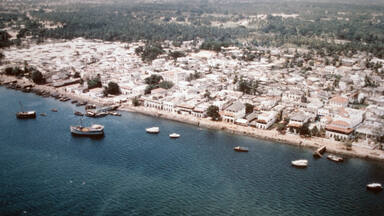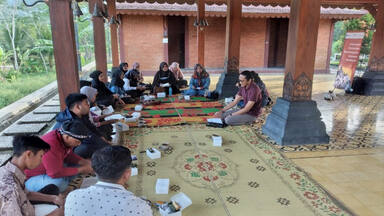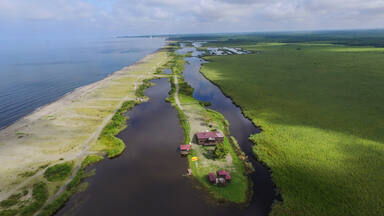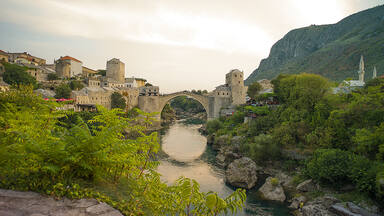The long closure of the sites led to reduced income, disruption of community life and reduced maintenance. Viet Nam’s international air routes reopened in March 2022, with significant promotional activity to mark the reopening of all the major destinations in Vietnam. At the same time, a general consensus has emerged among tourism businesses, local officials and sustainable tourism experts that ‘business as usual’ was not an option, particularly around the Hoi An Ancient Town World Heritage site.
One area of concern that had arisen prior to the pandemic was the amount of waste -particularly plastic waste- generated by the significant volume of visitors that the town had been receiving. Stakeholders took the early recovery period as an opportunity to rethink and reorient tourism development in a more sustainable direction. Similar to many destinations sharing the area’s warm climate, visitors are easily tempted to buy snacks and drinks while on the go, while retail and hospitality businesses regularly produce a large volume of waste (particularly plastic bags) associated with their sales.
Keeping the streets tidy and ensuring that waste doesn’t end up in waterways or fields is a big task, and one that the town must continually work at as visitors flow through the town. Landfill sites, where waste was properly disposed of, were often overloaded, with around 40% of waste being attributed to tourism. Local officials recognised that in order to keep Hoi An attractive and waste under control, businesses would need training on waste reduction, and that plastic bags should be banned in the town altogether.
The transformation that has occurred in Hoi An Ancient Town is explained in more detail in a documentary video that can be seen below:
Under this Programme’s activities, local hotels, restaurants, retailers and tourist guides are among the stakeholders who have been supported in attending workshops and awareness raising sessions on green and sustainable tourism. Three such sessions were held for the business community, local residents and students in the Trang An Landscape Complex between July and November 2022, and two were held in Hoi An Ancient Town - in May and December 2022. In addition to these, online training courses for tourist guides and artisans were set up and educational materials have been translated into Vietnamese for future reference.
The UNESCO Sustainable Travel Pledge helped significantly to raise awareness of the broad nature of sustainable tourism and the actions that accommodation businesses and their individual employees can take to support it. B2B campaigns were held in both Trang An and Hoi An which included peer to peer learning and visits to champion properties.
Local implementation partner: Quang Nam Tourism Association and Ninh Binh Tourism Association, coordinated by UNESCO Ha Noi Office
"The first main benefit is that everyone has the common sense to protect this one thing that we are all sharing, the planet. The second benefit is that increasing numbers of travellers are interested in protecting the environment, and as a result of our practices, we are better placed to attract this segment of the market.”
About the sites
Situated near the southern margin of the Red River Delta, the Trang An Landscape Complex is a spectacular landscape of limestone karst peaks permeated with valleys, many of them partly submerged and surrounded by steep, almost vertical cliffs. Exploration of caves at different altitudes has revealed archaeological traces of human activity over a continuous period of more than 30,000 years.
Hoi An Ancient Town is an exceptionally well-preserved example of a South-East Asian trading port dating from the 15th to the 19th century. Its buildings and its street plan reflects a fusion of indigenous and foreign cultures (principally Chinese and Japanese with later European influences) that combined to produce this unique survival.
Project background
The ‘Promoting sustainable tourism and private sector engagement for inclusive community development in response to the COVID-19 crisis’ project was developed by UNESCO thanks to support provided by the German Federal Ministry for Economic Cooperation and Development (BMZ) and the Deutsche Gesellschaft für Internationale Zusammenarbeit (GIZ). The project aimed to address some of the immediate socio-economic impacts of COVID-19 on tourism and heritage and was implemented across seven countries and ten World Heritage communities.
Discover more
Discover more about what this programme is delivering on the ground, as well as personal stories from those who have been involved







